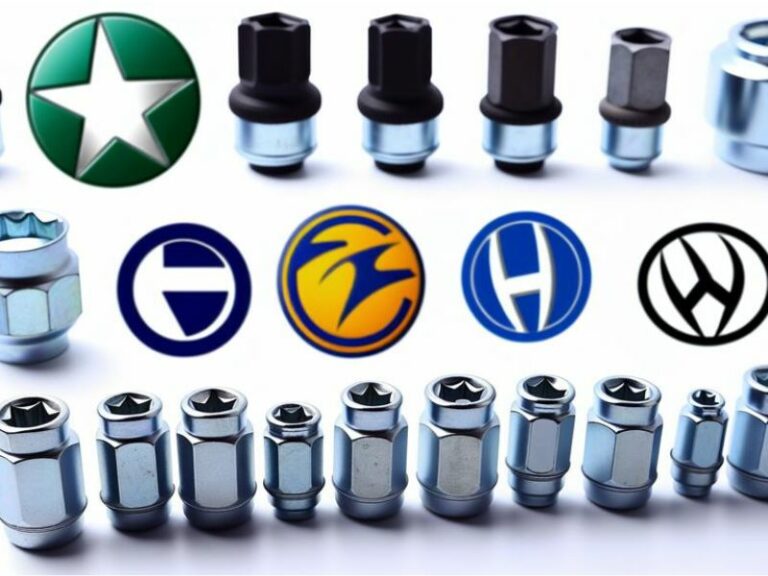What Size Socket For Lug Nuts

Knowing the correct socket size for your lug nuts is fundamental for anyone who performs their own tire rotations, brake jobs, or suspension work. Using the wrong size can lead to damaged lug nuts, rounded edges, and ultimately, a lot of frustration. This article will delve into the nuances of lug nut socket sizes, providing you with the knowledge to confidently tackle your next automotive project.
Purpose and Importance
Understanding lug nut sizes isn't just about convenience; it's about safety and preventing damage. Using the wrong size can easily strip the lug nut's corners, making it incredibly difficult – sometimes impossible – to remove. This can leave you stranded with a flat tire or delay critical repairs. Accurately identifying the correct socket size ensures a secure fit, proper torque application, and long-lasting hardware.
This knowledge is particularly valuable when:
- Performing routine tire rotations.
- Changing tires seasonally.
- Replacing brakes.
- Working on suspension components.
- Diagnosing wheel-related noises or vibrations.
Key Specs and Main Parts
Let's break down the essential components and terminology.
Lug Nut Types
Lug nuts come in various shapes and sizes, each designed for specific wheel types and vehicle applications. Common types include:
- Acorn/Conical: These are the most common type, featuring a cone-shaped base that centers the wheel on the hub.
- Mag/Flat: These have a flat seating surface and often require a washer.
- Ball Seat/Rounded: Similar to acorn nuts but with a rounded seating surface.
- Spline Drive: These use a unique spline pattern for added security and often require a specialized socket.
Socket Sizes
Lug nut sizes are measured in millimeters (mm) or inches. The most common sizes for passenger vehicles are:
- 17mm
- 19mm (3/4 inch - very close approximation and often interchangeable)
- 21mm (13/16 inch - very close approximation and often interchangeable)
- 22mm
- 23mm
Trucks and SUVs often use larger sizes. It's crucial to use the correct unit of measurement (metric vs. imperial) to avoid damaging the lug nut.
Socket Types
The type of socket you use is also important. Here's a quick overview:
- Standard Sockets: General purpose sockets for hand tools.
- Impact Sockets: Made from stronger steel (typically chrome molybdenum) to withstand the higher torque of impact wrenches. Always use impact sockets with impact wrenches!
- Thin-Wall Sockets: Designed for wheels with tight lug nut recesses.
- Lug Nut Sockets with Protective Sleeves: Feature a plastic sleeve to prevent scratching or damaging the wheel finish.
How It Works: Identifying the Correct Size
The most reliable way to determine the correct socket size is to consult your vehicle's owner's manual. This will provide the specific lug nut size for your make and model.
If the manual isn't available, you can use the trial-and-error method. Start with a socket slightly smaller than what you visually estimate. If it doesn't fit, increase the size incrementally until you find one that fits snugly. Never force a socket onto a lug nut. This can damage both the lug nut and the socket.
Alternatively, use a set of calipers. Measure the distance across the flats of the lug nut. This measurement will correspond to the socket size needed.
Once you've identified the correct size, verify it by trying it on a different lug nut on the same wheel. This confirms consistency and ensures you haven't misidentified a damaged or non-standard lug nut.
Real-World Use: Basic Troubleshooting Tips
Even with the right socket size, you might encounter issues. Here are a few troubleshooting tips:
- Rounded Lug Nuts: If a lug nut is already rounded, a standard socket will likely slip. Try using a rounded lug nut removal tool (also called a lug nut extractor). These tools have a reverse spiral design that grips the damaged nut.
- Corroded Lug Nuts: Penetrating oil can help loosen corroded lug nuts. Apply the oil and let it soak for several minutes before attempting removal.
- Stuck Lug Nuts: Use a breaker bar to increase leverage. If that doesn't work, a torque multiplier can provide even more force. Be cautious not to over-torque and break the lug nut.
Applying heat is generally discouraged as it can weaken the lug nut and potentially damage nearby components. If you're consistently struggling with stuck lug nuts, consider replacing them with new ones.
Safety Considerations
Working with lug nuts involves significant torque, which presents certain risks. Always prioritize safety:
- Wear Safety Glasses: Protect your eyes from debris.
- Use Impact Sockets with Impact Wrenches: Standard sockets can shatter under the force of an impact wrench, sending fragments flying.
- Properly Position Yourself: Maintain a stable stance and avoid overreaching.
- Torque Lug Nuts to Specification: Use a torque wrench to ensure proper tightness. Under-torqued lug nuts can loosen, while over-torqued lug nuts can stretch or break.
Avoid using excessive force if a lug nut is stuck. This can lead to injury or damage to the vehicle. If you're uncomfortable with any aspect of the process, consult a professional mechanic.
Wheel studs are the threaded bolts that the lug nuts screw onto. Damaged or broken wheel studs are a serious safety concern. Inspect them regularly for signs of wear or damage, and replace them immediately if necessary.
Additional Resources
While this article provides a comprehensive overview, access to a visual diagram can further enhance your understanding and provide a quick reference guide when working on your vehicle.
We have a detailed diagram illustrating common lug nut types, socket sizes, and best practices for removal and installation. You can download it here.
